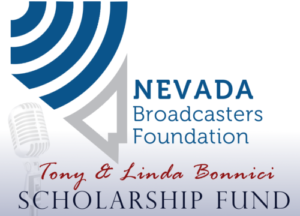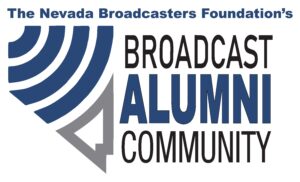
The US Court of Appeals for the DC Circuit issued a decision last week rejecting all of the appeals of the decision by the Copyright Royalty Board (“CRB”) setting the rates that noninteractive webcasters pay to SoundExchange for the digital public performance of sound recordings in the period 2021-2025 (see our article here on the 2021 CRB decision). As detailed below, the Court rejected appeals from three parties, two that argued that the rates were set too high for specific classes of webcasters, and one from SoundExchange itself which argued that the rates should have been even higher.
As a reminder, the CRB rates apply to all companies who provide a non-interactive, internet-delivered steam of programming which includes recorded music or other audio content, including broadcasters who simulcast their over-the-air programming on the internet. Congress established the process of setting rates through hearings by the CRB so that noninteractive webcasters would have access to all recorded and publicly released audio recordings without having to individually negotiate with each copyright holder (see our article here about the CRB’s responsibilities). Services pay these “statutory royalties” to SoundExchange, observe certain requirements that limit how often particular recordings are played so as to not make the services a substitute for buying recordings or listening to them through on-demand services (which pay higher royalties negotiated directly with the copyright holder), and report to SoundExchange what they play. SoundExchange collects the royalties and uses the reports of what the services played to distribute the royalties they collect. One-half of the royalties collected go to the performers on the sound recording, and one-half to the copyright holders of the recording, usually the record labels that own the copyrights for sound recordings.
Three parties appealed the CRB’s June 2021 decision setting the royalties to be paid by webcasters for 2021-2025 (the CRB sets rates in 5-year increments). The NAB and the NRB-NMLC (i.e., the National Religious Broadcasters’ noncommercial music licensing committee) argued that the royalties set for their members should be lower than the rates set by the CRB. SoundExchange, on the other hand, argued that they should be higher.
The NAB’s argument was that simulcasters should pay a lower royalty rate than “custom radio” services like Pandora. The CRB decision had set one rate for all commercial webcasters, making no distinction between custom radio, where a user can influence what they will hear (by “liking” songs causing the service to play similar songs, or by skipping songs that the listener does not like, or through similar means), and other services where no such influence was possible. Custom radio services can pay the statutory royalty rather than having to negotiate directly with rightsholders for the rights to play music as long as they do not allow listeners to select specific songs, or to play the same set of songs over and over, or to otherwise overly influence what they hear so that listeners have what amounts to an on-demand experience. The line between non-interactive custom radio and interactive services is not a clearly defined one, but instead has been set by court cases (see our articles here, here, and here explaining the difference).
In setting rates, the CRB is supposed to determine what a willing buyer and a willing seller would agree to in a market transaction. Among the factors to be reviewed in making this determination is the degree to which the licensing of the recording substitutes for the sale or other monetization of the recording. The NAB contended before the CRB, and argued in Court, that simulcasting was not as much of a substitute for buying music or listening to an on-demand music service that pays higher royalty rates as is a custom webcaster, where users can select the genre of music they will hear or even specify favorite artists to be included in their streams. The NAB argued that, because the person listening to a simulcast cannot influence what songs they will be hearing as the broadcaster is making all the decision as to what will be heard, simulcasters should not pay as much for their use of music as custom radio. NAB also challenged the increase in the minimum yearly fee paid by each webcaster for each stream that they provide. The minimum fee was raised from $500 to $1000 by the 2021 CRB decision.
The NRB-NMLC argued that the Board should have, in setting the rates applicable to the webcasters they represent, used as a “benchmark” the rates that SoundExchange agreed to in a settlement with the Corporation for Public Broadcasting setting the rates that NPR and other CPB-backed entities pay. The CRB, in trying to determine what a willing buyer and a willing seller will pay for royalties looks for “benchmark rates” – rates set outside the CRB process that would seemingly be the result of a marketplace negotiation. The NRB-NMLC argued that as the NPR rates were for music played by noncommercial radio operators, those rates should serve as a benchmark for setting the rates that apply to noncommercial religious broadcasters. Setting rates that were not comparable, the NRB-NMLC argued, would be religious discrimination in violation of the Religious Freedom Restoration Act.
The third appeal was by SoundExchange itself which argued that the rates should have been even higher than those set by the CRB. SoundExchange argued that the CRB had disregarded evidence of the lost opportunity costs suffered by copyright holders who were forced to license their music under the statutory licensing process administered by the CRB.
The Court rejected all the arguments. As we’ve noted before (see, e.g., our articles here and here), in any such proceeding the Court gives deference to an administrative agency that is viewed as the expert in their field. Agency decisions are only overturned if they are “arbitrary and capricious,” if they ignored record evidence, or if they are otherwise contrary to law. In looking at this case, the Court relied on that deference and upheld the CRB’s decision. The Court looked at each of the arguments and found that no party had provided sufficient record evidence to show that the CRB decision was clearly improper. While the Court resolved many specific evidentiary and procedural issues to reach its conclusion, some of the principal reasons for the Court’s decision follow.
On the NAB’s argument, the Court said that the NAB had not adequately shown that simulcasting was so different from other webcasters that it deserved a separate rate. Without specifically rejecting NAB’s argument that simulcasting was different from custom radio, the Court faulted NAB for not distinguishing simulcasters from other webcasters who, while not simulcasting broadcast stations, also did not offer the user any interactivity. As these other webcasters would also pay the CRB-set rate, the Court could see no difference between these non-custom webcasters and simulcasters. The Court also rejected benchmarks that the NAB used which showed that some record labels had agreed to allow some broadcasters to use their music and voluntarily take lower royalty payments. The Court upheld the CRB decision that there were too few of these agreements to be meaningful.
The Court rejected the NRB-NMLC arguments that the differential in noncommercial rates was improper discrimination based on the religious nature of the NRB-NMLC members. The Court first found that NRB-NMLC had not shown by record evidence that the NPR rates were in fact better – rejecting the NRB-NMLC’s arguments that the NPR rates were lower because that fact had not been established by an expert witness. The Court also noted that the rates for which the NRB-NMLC was advocating are open to all nonprofit webcasters not affiliated with CPB or educational institutions, not just those that have religious affiliations. Thus, the Court concluded that there was no religious discrimination as the rates for noncommercial webcasters applied to any nonprofit, non-NPR station.
SoundExchange’s argument was rejected by the Court with the least discussion. The Court basically found that SoundExchange was wrong in its contention that “opportunity costs” were overlooked. The Court instead found that they had explicitly been considered. As they had been considered, there was no reason to upset the CRB’s ruling.
As a practical matter, the Court’s decision does not change much. As we wrote here, the CRB decision is already in effect. The mere filing of an appeal does not stop the rates from being effective. Thus, webcasters should already be paying the royalties at the rates set by the CRB decision (and adjusted upward for 2023 by a cost-of-living factor established in the 2021 decision – see our article here).
Theoretically, any party could request an “en banc” review of this Court’s decision by all of the judges in the DC Circuit. Any party could also appeal the decision to the Supreme Court. Such further proceedings are very rare in cases like this, but there are unique arguments raised in every case, so one never knows what the parties will do. But, even if they do not try to further prolong this case, this is not the last chance that the parties will have to argue that the rates should change – as the two-year proceeding to set the rates for 2026-2030 starts early next year.
Courtesy Broadcast Law Blog


